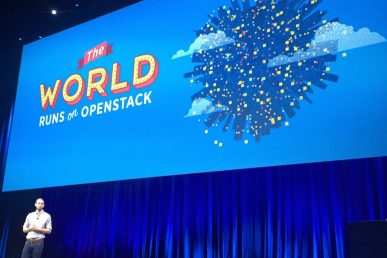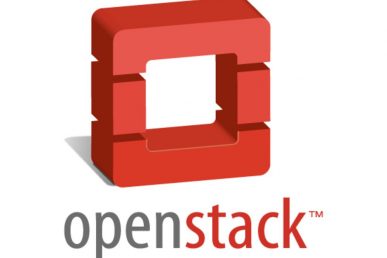OpenStack’s Executive Director Jonathan Bryce has a simple yet compelling goal: to give the world all the computing capacity it’s going to need in the very near future.
In the keynote given at the recent OpenStack Days Silicon Valley in Mountain View, California, Bryce explained that he’d also like to make sure that the much-needed capacity isn’t locked up within only a few organizations, governments, or companies.
“Having an open, viable, and powerful set of tools to enable that is extremely critical,” says Bryce.
A lot of the players in the same space as OpenStack, who provide stakeholders with the compute, power, and storage capacity they need to bring innovative products to market or the public space, all treat it as a zero-sum game. As if taking market share and becoming the top dog is the most important thing.
Bryce thinks about it differently.
“Because of the scope of what this industry is now able to do,” Bryce says, “it’s really a positive-sum game.”
It’s this sense of growth and collaboration that informs OpenStack’s current aim. The Foundation owes its base to software, events and users, but it’s also more than the sum of those parts.
“What we’ve really created,” says Bryce, “is a competitive marketplace for ideas that really values implementation and contribution.”
To keep moving forward, Bryce thinks there are three things OpenStack must do: innovate, collaborate, and duplicate success.
Innovate
The technology industry never slows down, so it’s time for OpenStack to look to the future by studying what users are starting to do now. OpenStack users are already working in areas like the “internet of things,” machine learning, artificial intelligence, and massive data analytics.
“It’s critical,” says Bryce, “that OpenStack continues to expand what it supports in these workloads.”
It’s not time to circle the wagons and double-down on what OpenStack does now, but rather continue to grow critical services and an ability to provide cloud services and infrastructure for what its users will be doing in the near future.
Collaborate
In its continuing effort to find ways to push the envelope for new ideas and services for its users, OpenStack must also collaborate.
“This is an opportunity right now to put together incredible tools that are being built in different communities in new ways to build the best system for users and application developers,” says Bryce.
Just as the LAMP stack (Linux, Apache, MySQL, and PHP) empowered developers to implement powerful web applications and change the way users see the internet itself, OpenStack — as part of a collaborative effort among open source technologies — will power the next cloud frameworks and change the way people use networks, cloud computing, and data storage.
This is how OpenStack will support collaboration among technologies to give users reliable, scalable, programmable infrastructure so they can go out and do amazing things.
Duplicate success
OpenStack, says Bryce, is a serious technology for cloud computing. Historically, it’s been challenging to set up, requiring a lot of technical knowledge and help from the community. The last couple of releases, though, have focused quite a bit on making OpenStack much easier to install, upgrade, and manage.
“A lot of the challenges that users face go beyond the technology,” he says, “to the culture and the processes and the people that they have to work with inside of their organizations.”
OpenStack has to learn how to help share knowledge and duplicate successes across a wider variety of users. There are incredible success stories out there, with dozens of clouds with multiple thousands of nodes running great workloads.
“I think that one of the things we need to do a better job of is sharing those and making it easier to duplicate that,” says Bryce.
The OpenStack Foundation has begun this process with some useful consumable content for users looking to use OpenStack to power their cloud computing workloads. Found at openstack.org/enterprise, these books cover not just the technology or how to get started form a software perspective, but also what needs to be considered from an organizational standpoint to put together a successful cloud computing strategy.
The Foundation has also launched a program to empower users to become a Certified OpenStack Administrator, further supporting the platform and the community itself. Talent is a challenge with every new technology; with more OpenStack experts out there, says Bryce, the platform and technology can become even more ubiquitous.
Ultimately, says Bryce, OpenStack needs to keep the innovation flowing and keep welcoming new ideas and concepts. It needs to make sure to collaborate with other important technologies and keep finding ways to put them together to create new value. In addition, OpenStack has to share the successes and the information that successful users are coming away with to continue its phenomenal growth into the premier open source cloud computing platform in the years ahead.
Cover Photo // CC BY NC
- Yes it blends: Vanilla Forums and private clouds - November 5, 2018
- How Red Hat and OpenShift navigate a hybrid cloud world - July 25, 2018
- Airship: Making life cycle management repeatable and predictable - July 17, 2018

)










